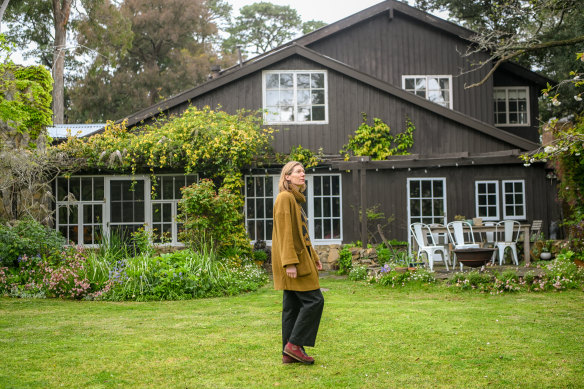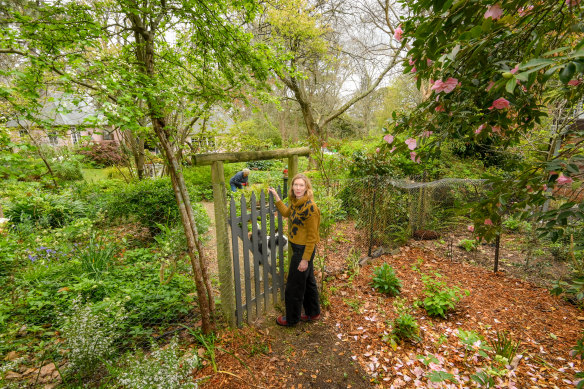
The 100-year-old village where gardens are a point of connection
“Everyone is interested in this style of landscaping and in Edna Walling. We don’t all live in each other’s pockets, but we regularly borrow sugar and eggs and, if we’re digging up plants, we share them,” Vardy says.

Edna Walling once lived in the house in which Vardy and her family now live.
Credit: Justin McManus
They also band together for working bees to maintain the laneways and quarterly meetings to discuss various other aspects of Bickleigh Vale. This village is not for the faint-hearted.
Vardy lives with her husband and four children in the house Walling herself lived in from 1951 until 1967. Their land stretches over a huge 5000 square metres. Vardy describes it as “a little bit of country in the city”.
Their garden has a sweeping lawn and garden beds teeming with magnolias, silver birches, crab apples, maples, camellias, hydrangeas, hellebores and spring flowering bulbs. There are stone walls and steps, a pond, flagstones and arbours. It feels leisurely and harmonious.
It is the same in many of the surrounding gardens. Walling, who began building her first Bickleigh Vale home and garden in 1920, ensured a consistency of style that remains today. This sense of unity extends over the different gardens and across the public lanes on which these gardens sit. The village’s winding streets are lined with native plantings – including eucalypts and wattles – just as Walling liked.

A gate that joins Vardy’s garden with that of her neighbour.Credit: Justin McManus
While gardens are ever-changing, and it can be difficult to maintain a designer’s original ideas 100 years on, Vardy says she always keeps Walling’s views in mind.
“I think, how would Edna prune that or would she have planted this? Most villagers feel that we are really caretakers of these gardens and like to maintain her vision. We are all sensitive to her style and aesthetic.”
High-density living this might not be, but how good if the latest alternative housing strategies engendered this much enthusiasm next century?



